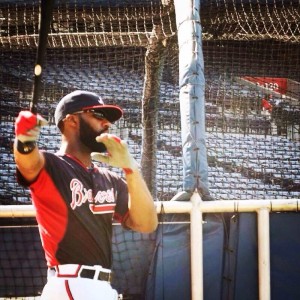We all know what the four seasons (hint: spring, summer, winter and fall). But did you know there are four seasons for the development of hitters. It is commonly said that baseball is a year-round sport, yet nobody is discussing in detail what to do and when.

I won’t go into too much detail in this blog about my intellectual property, but I will share the four phases of development I use for my hitters.
Fall (August-October) – The Assessment Phase
Fall is reserved for the assessment for my hitters. This is when I assess their hitting skills with regards to their load, timing of the load, tempo of the load, tracking pitches, approach, and the contact and extension/finish phases of the swing.
Bat speed and raw power are tools – talents that can earn you name recognition on the travel ball circuit. For fall, we are going to forget about getting hits and measure the four following disciplines:
- How often do you get loaded on time with good tempo?
- How often do you successfully track pitches?
- How often do you repeat your swing?
- How often do you hit the ball hard and extend on pitches?
Under the supervision of a trusted hitting instructor, you continue your development with simple and effective drills. Your instructor will help you track your success in drills with these hitting mechanics.
- Stance/load x 3,000 reps
- Timing-load x 3,000 reps
- Tempo-load x 3,000 reps
- Tracking pitches x 3,000 reps
- Approach x 3,000 reps
- Contact x 3,000 reps
- Extension/finish x 3,000 reps
Winter (November-January) – The Build Phase
So, now that we’ve assessed your swing mechanics in the fall, it’s time to build habits. Your results in each skill level should direct this building phase. I warn you that it takes 3,000 reps to build habits. This statement has just caused thousands of baseball players to give up their dream of playing Major League Baseball. The simplistic statement: “It takes hard work to be a great hitter” just go simpler.
Below are the habits you must build. Now it’s time to find some good drills. If you get bored easily, this may be a long three months:
- Stance/load x 3,000 reps
- Timing-load x 3,000 reps
- Tempo-load x 3,000 reps
- Tracking pitches x 3,000 reps
- Approach x 3,000 reps
- Contact x 3,000 reps
- Extension/finish x 3,000 reps
Spring (February-April) – The Conversion Phase
You’ve put in the time this winter to build sound habits. Now it’s time to convert those habits to skills. Skills pay the bills for college and professional athletes. Your drills and the time you spend doing them are crucial. If you don’t know how to manage and prioritize your time, you’ll never reach elite status as a hitter.
To convert your habits to skills, I recommend you use the same drills for each part of the swing:
- Stance/load x 3,000 reps
- Timing-load x 3,000 reps
- Tempo-load x 3,000 reps
- Tracking pitches x 3,000 reps
- Approach x 3,000 reps
- Contact x 3,000 reps
- Extension/finish x 3,000 reps
Summer (May-July) – The Maintenance Phase
The dedicated and committed hitters that have assessed their skills in the fall, built good habits in the winter and converted habits to skills in the spring have earned the right to maintain their hitting skills in the summer.
Coaches are quick to say, “Relax up there and hit the ball, son.” You have to earn the right as a hitter to relax. It doesn’t happen because you tell yourself to do it.
Success in the summer starts in the fall. As you maintain your skills, I recommend you do the same drills from the winter and spring. You will be required to get the same amount of reps per part:
- Stance/load x 3,000 reps
- Timing-load x 3,000 reps
- Tempo-load x 3,000 reps
- Tracking pitches x 3,000 reps
- Approach x 3,000 reps
- Contact x 3,000 reps
- Extension/finish x 3,000 reps
This is what commitment is all about. For someone who says that this isn’t realistic, I’m blessed to say that it has worked successfully for several of my Major League Baseball clients, whom I began working with as pre-teens and teens.
If you follow this year-round calendar, you are committing to more than 80,000 reps in a calendar year. This will help you become an elite hitter if you do this. Trust me I know.
Remember: Good hitters don’t work hard; they work smart.
For more information, visit www.diamonddirectors.com today.
BIO
C.J. Stewart has built a reputation as one of the leading professional hitting instructors in the country. He is a former professional baseball player in the Chicago Cubs organization and has also served as an area scout for the Cincinnati Reds. As founder and CEO of Diamond Directors Player Development, CJ has more than 12 years of player development experience and has built an impressive list of clients, including some of the top young prospects in baseball today. If your desire is to change your game for the better, C.J Stewart has a proven system of development and track record of success that can work for you.

Leave a Reply